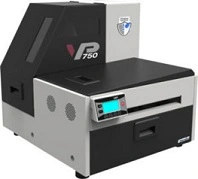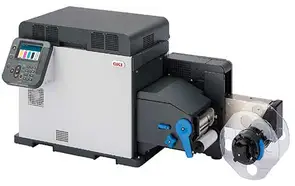Inkjet Label Printers vs Laser Label Printers - Which is Best for You?
Once you have decided to print you own product labels, one of the first decisions you will need to make is whether to use an inkjet label printer versus a laser label printer.
Each type of printer has its own pro’s and con’s, which we will highlight here, with the view to help you make the best decision as to which type of label printer is best suited for your particular printing requirements.
1. Printer Cost – One of the first considerations is certainly price. In the world of commercial grade label printers, inkjet printers are traditionally less expensive than laser printers.
The inkjet printers that Label Power supplies range in price from AU$2000 - AU$12,000, while the commercial grade laser printers range from AU$13,000 - AU$17,500. See a list of specific printers and prices at the end of this article.
2. Consumables Costs – When considering printing your own labels, the next thing to review are the costs of consumables like ink and label stock.
In general, based on our testing, the ink cost per label, when comparing the two types of printers, is not much different. Your actual ink cost per label is entirely driven by how your label is designed. A label with black ink text on a white label background will be much cheaper than a label with a solid colour background and multi-coloured text or images, no matter which type of printer you use.
Label stock, however, is a different matter.
Due to the simple concept of supply and demand, laser labels are usually much cheaper, because there are more laser printers in the world than inkjet printers, so there are more laser label manufacturers, hence you will traditionally get lower per label costs with laser printers.
3. Indoor vs Outdoor Labels – Where your products will be placed / stored / consumed makes a big difference in which type of printer will be required.
If your product labels or stickers will be used outdoors, in cold / wet environments like freezers or refrigerators or exposed to direct sunlight, then the only option are the laser printers. Laser printed labels are much more resistant to sunlight (UV), moisture, chemicals and physical scratches.
Because laser printers use a dry powder ink, which is fused onto the label at the time of printing, they also have a much longer lifespan in outdoor situations compared to the liquid ink used by inkjet printers.
4. Stock Options – The design of your label will have a direct impact on the best printer for you.
With Inkjet printers, you only have two options for your stock; white paper or white synthetic. You can have multi-coloured text and/or images overprinted onto the white stock, but the background is always white.
With laser printers, you can have both white paper or white synthetic, but you can also have a clear stock or a single-coloured background with a range of colours to choose from. Multi-coloured images and text can then be overprinted onto the clear or coloured stock.
5. Printing White - If you want to print white text or images on clear or coloured stock, again the only choice is a laser printer.
Inkjet printers use CMYK cartridges, so they simply can’t print white, while laser printers use CMYK + Opaque White toner cartridges, so white fonts or images are possible.
6. Colour Quality – Traditionally, industry pundits agree that if your product will be displayed indoors in a dry place, and relies on or includes multi-coloured images, the preferred type of printer is an inkjet.
Adjectives often used to describe labels printed with an inkjet printer are “popping”, “sharp”, “vivid” and “eye-catching”.
If, however, your products are stored outdoors or in wet / cold environments, then the preferred option is the laser printer as already highlighted above, which can also print amazingly good multi-coloured images.
7. Print Speed – If print speed (labels printed per second) is one of your considerations, then it’s a fairly simple choice.
Laser label printers have a fixed print speed, while the inkjet printer's print speed is effectively based on the cost of the machine, so the more expensive the printer is, the faster it prints. In the VIP Color example, the VP600 prints faster than the VP500 and the VP700 prints faster than the VP600.
Conclusion – Printing your own product labels can save you both money and time, especially with small to medium sized print runs. There are other considerations, like label applicators and software, that we will cover in future articles.
How and where your products will be used and stored makes a big difference in the type of printer best suited for your particular situation.
Inkjet Label Printers:
https://www.labelpower.com.au/products/printers/printers-by-brand/vip-color
VIPColor High Performance Inkjet Printers -
VIPColor Water Resistant Inkjet Printers -
VIPColor Memjet Printers -
VP700, VP 750 (Water Resistant)
Epson Inkjet Printers -
https://www.labelpower.com.au/products/printers/printers-by-brand/epson
Laser Label Printers:
OKI Laser Printers -
https://www.labelpower.com.au/products/printers/printers-by-brand/oki
Contact the professionals at Label Power, on 1300 727 202, if you have any further questions or to discuss your unique printing requirements today!



